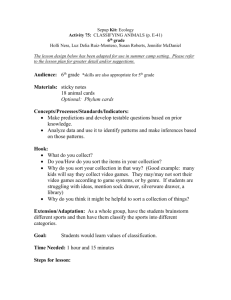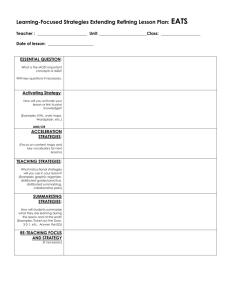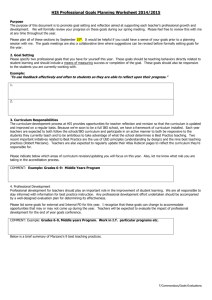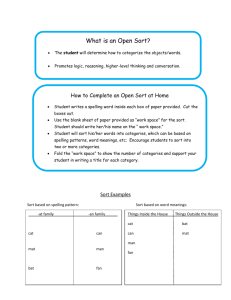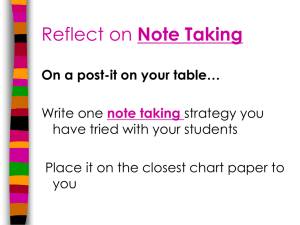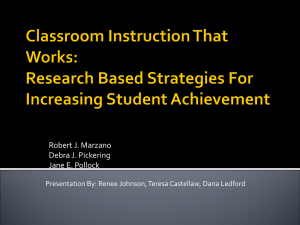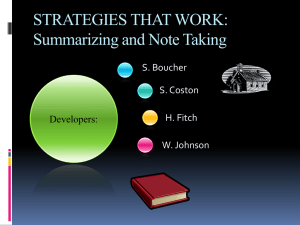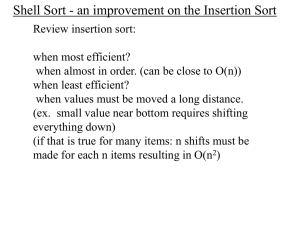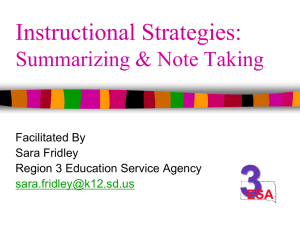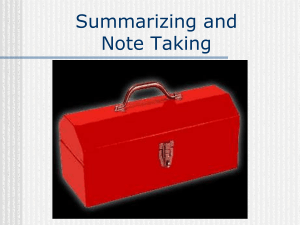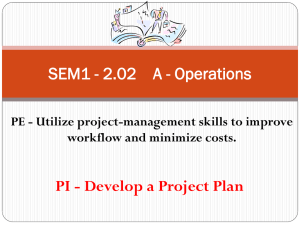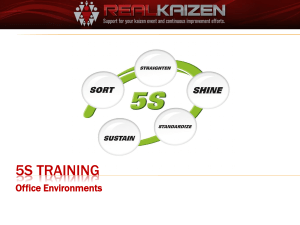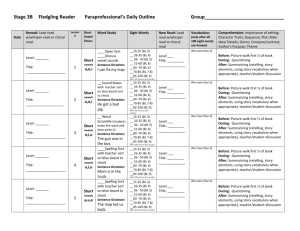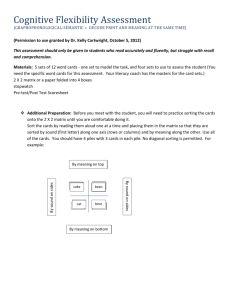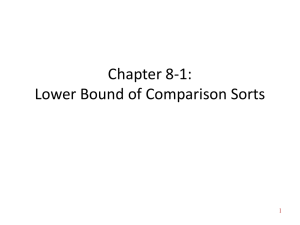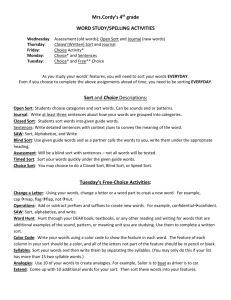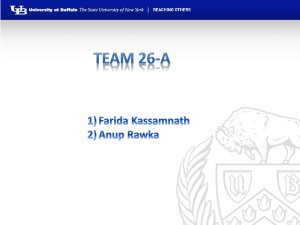Top Ten Summarizing Ideas: Solidifying the Learning
advertisement
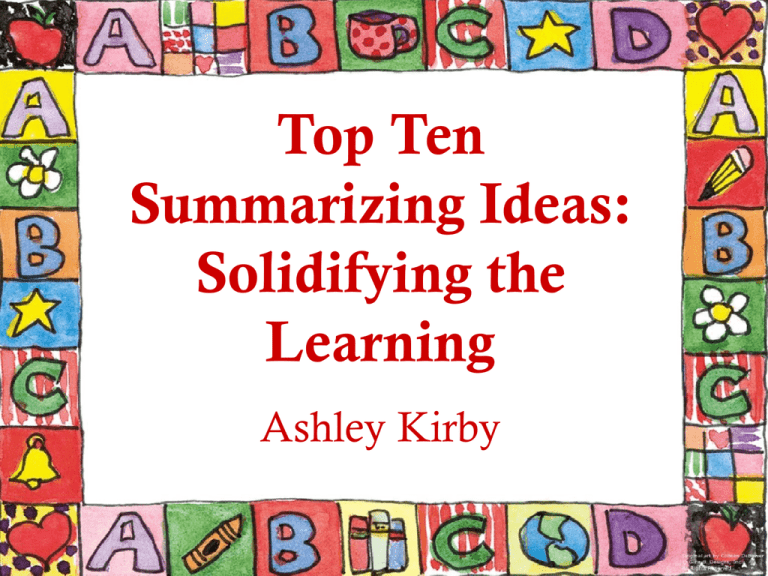
Top Ten Summarizing Ideas: Solidifying the Learning Ashley Kirby Who’s in a HOT SEAT? Why bother? • Summarizing is a life skill • Based on the Primacy-Recency Effect: the brain remembers best what it learns first and last • Based on research by Robert Marzano: summarizing strategies assist students in retaining information and making connections to prior knowledge Strategies that Most Impact Student Achievement Category Rank Percentile Gain Identifying Similarities & Differences 1 45 Summarizing & Note-taking 2 34 Reinforcing & Recognizing Effort 3 29 Homework & Practice 4 28 Nonlinguistic Representations 5 27 ~based on Robert Marzano What do you need to know? • Requires students to answer the essential question • Seems straightforward but is actually complex • Involves a skilled inclusion and exclusion of ideas • Depends on numerous mental processes • Students can’t “fake it” 1. Password • • • • • Pair up with a partner. Decide who is a 1 and who is a 2. 1’s turn away from the screen. 2’s turn to face the screen and your partner. A series of pictures or terms are revealed. 2’s start at the bottom left and go across giving clues to your partner. When your partner guesses correctly, start the next series of clues. • Follow the arrows until you and your partner reach the top of the pyramid. K – Community Helpers 4th – Newton’s Laws Force Newton’s 1st Law Position Newton’s 2nd Law Motion Direction 2. Tic-Tac-Know • Using this board, explain to your table or a partner how 3 of the pictures or terms relate or connect - in a row either up, down, across, or diagonal • Can have students discuss or write 1st – Symbols of Our Country 4th – Informational Text Fact Caption Main Idea Glossary Topic Sentence Supporting Detail Chronological Order Cause and Effect Supporting Idea 3. Collaborative Sort Cards • Students have the chance to classify topics, words, and phrases into categories • Process of sorting and classifying strengthens the student's ability to comprehend and retain difficult information • Through a discussion of possible solutions, students negotiate the contextual meaning of the topics, words, or phrases Examples • K math: sort shapes, can have pictures on cards or actual objects to sort • 3rd grade science: sort examples of heat production (electrical, mechanical, friction) • 5th grade math: sort equivalent fractions 4. Q-Matrix • A collection of 36 question prompts based on the levels of Bloom’s created by Chuck W. Wiederhold • Students create and process higher level questions based on current content • Questions can be manipulated into different formats: • Tic-Tac-Toe • Dice • Strips 5. Shaping Up Review • “The Heart” – students write one thing that they loved learning about in the lesson • “The Square” – students write four things that they feel are important concepts from the lesson being reviewed; one concept in each corner • “The Triangle” – students write the three most important facts they learned from lesson being reviewed; one fact in each corner. • “The Circle” – students write one, allencompassing (global- like the circle) statement that summarizes all of the important concepts and facts learned in the lesson being reviewed 6. Exit Tickets • Also known as “Ticket Out the Door” • Good to use at times of transition (lunch, specials, end of the day) 7. Visual Prompts • Teacher provides students with a picture along with a prompt: • a magazine photo, an illustration, a slide, transparency, snapshot, etc. • Students respond to it in writing or in a classroom discussion using one of the following formats: • narrative, descriptive, persuasive, or expository 2nd – Motion and Celestial Bodies • Explain why the moon looks different over time. 8. Mystery Box • Teacher displays a box with a variety of objects or vocabulary cards inside relating to the content. • Teacher selects students to draw an object or card from the bag, one by one. • Students discuss orally or in writing what they know about each item as it relates to the content. 9. Letter Bag • Select students to choose a letter from the bag. • Each student shares a word that begins with his letter and that summarizes the lesson’s content. Topic: St. Patrick’s Day Hot Seat • Before the beginning of class, the teacher prepares 4-5 questions related to the topic of study and writes them on sticky notes. • Place the sticky notes underneath student desks so they are hidden from view. • At beginning of class, inform students that several of them are sitting in “Hot Seats” and will be asked to answer the questions. • Have the students check their desks for the strategically placed sticky notes. • Students who are in the “Hot Seats” take turns answering the questions.
